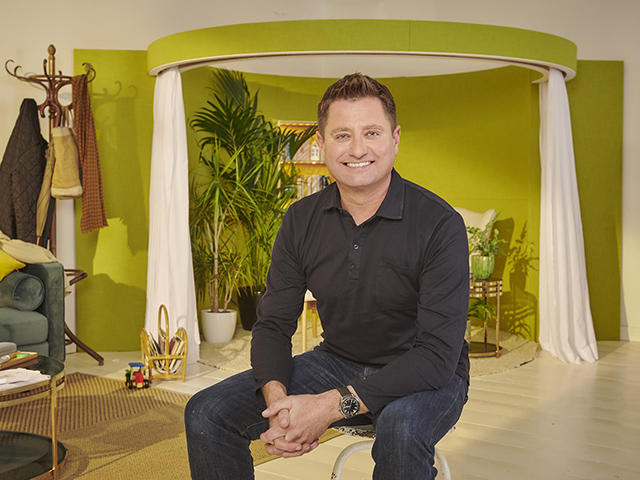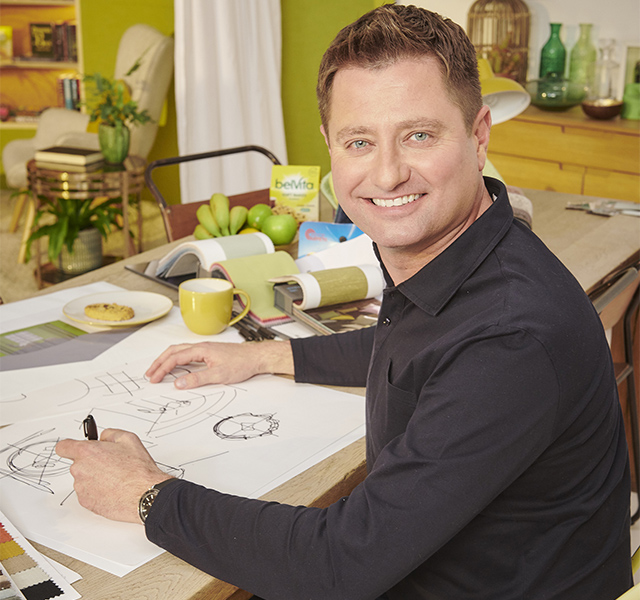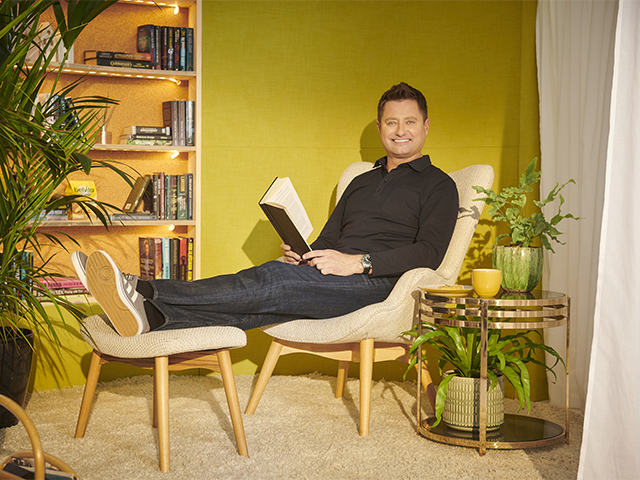
George Clarke shares expert mindfulness tips
With flexible working set to continue after lockdown restrictions are lifted, separate work and home life with these expert mindfulness tips

Image: BelVita
‘Homes are where we go to seek comfort and respite, and for many of us, this has been thrown up in the air. With constant digital noise and information, not only is our home invaded, our brains are full too. I designed the Recharge Retreat to make it as simple and straightforward for our mind and body to reset.’
This National Bed Month, we sat down with George Clarke and Neuroscientist Dr Jack Lewis to find out their top mindfulness tips for learning how to switch off and reclaiming the space in your home.
What is a Recharge Retreat?
The Recharge Retreat is an in home space that combines science and design to give your mind what it needs to recharge. Designed by George Clarke it includes all the scientific elements that have been known to help destress and recharge and have an impact in minutes, when used consistently.
The circular shape offers immediate comfort, adjustable lighting to suit an individual mindset, calming scents and indoor plants to provide a connection to nature and heighten our senses – the Recharge Retreat has a strict no mobile rule.
And why won’t a corner in the room, just do? George reveals why, as well as the steps he took to instil a sense of sanctuary into the space:
‘Corners in rooms are seen as being psychologically negative spaces, while rounding the corner can be psychologically pleasing and comforting, so I wanted to design something that evoked comfort and safety to help us recharge.’
How to create a Recharge Retreat

Image: BelVita
While not everyone may have the space or time to dedicate to implementing their own Recharge Retreat, there are five tips that Neuroscientist Dr Jack Lewis has developed which we can all do in order to reclaim space.
Speaking to him, he said: ‘Five minutes may not feel like a lot but can often be all our brains need, if we do it on a regular basis. Whether it is resetting and coming back to a task, switching from work mode to parent mode, or simply cooling off at the end of the day, we want to help our brain to get the message as quickly as possible that it’s ok to switch off from what you were just doing.’
Mindfulness tips to try
Tip 1: Break away from your desk
Ensure you work in one place and take your breaks somewhere else, so that the two are very separate. Just by moving away from the spot where you handle work stresses should help give you some psychological distance.
Tip 2: Create a unique multi-sensory experience that your brain can come to associate with unwinding from working stresses

Image: BelVita
Here are George and Dr Jack Lewis’ ways to ‘carve out a sensorial fingerprint’:
- Visual (seeing) sense: ensure the lighting is different from your workspace.
- Auditory (hearing) sense: have calming sounds in the background, such as rain or ocean waves, to help drown out distractions.
- Gustatory (taste) sense: take a moment to tuck into a treat (George is partial to a BelVita bar).
- Olfactory (smell) sense: a drop of mandarin essential oil for the citrus scent, or a scented candle you love.
- Tactile (touch) sense: put your bare feet on a soft fabric, like a sheepskin rug.
Tip 3: Be consistent
Try to be as consistent as possible in how you use your Recharge Retreat. Brains take great comfort in routine and standardising the ritual should help you relax.
Tip 4: Banish all screens
To get full benefit from this Recharge Retreat, we need to follow some rules, leaving screens behind and switching phones to silent. This includes all devices such as mobiles, tablets, televisions, computers and laptops. Particularly avoid reading your phone in bed as these blue light waves play havoc with your sleep-wake cycle.
Read more: 5 expert tips for digital wellbeing at home
Tip 5: Adopt a different posture
On the science behind the steps, Dr Jack Lewis said: ‘The idea is to teach our brain that a certain combination of sights, sounds, smells etc – whatever we decide we want to experience while inside our recharge retreat – is always paired with feelings of winding down and becoming relaxed.
‘Just the ritual of setting up the retreat by itself is enough to kickstart the process of reducing stress levels. And the more often you use it, the more effective it becomes.’
The future of living
Image: BelVita
We asked George how he sees his Recharge Retreat influencing interior design.
He said: ‘It would be amazing if the designers of new build homes created spaces like this, that helped with wellbeing rather than just focusing on utility and style.‘




